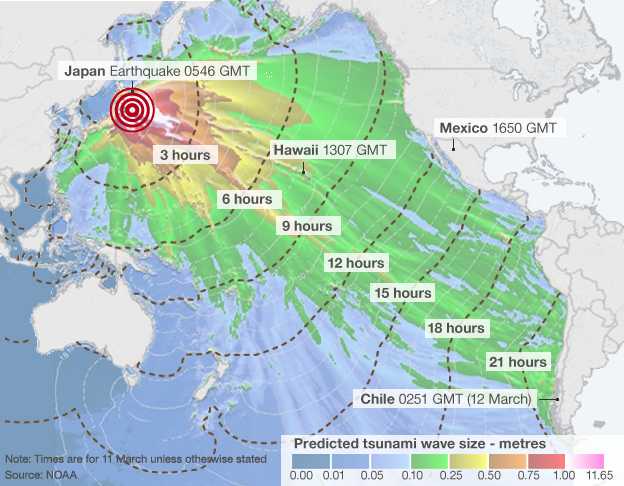Whether it is one of your first tasks in the morning or a popular conversation starter, weather conditions drive our daily decisions more than we think, and have become easier to predict with the advent of new technologies. In this post, I will be discussing how digital innovation has impacted meteorologists’ ability to better predict and analyze weather forecasts and natural disasters.
In March 2011, a devastating earthquake and tsunami ravished Japan and left tens of thousands of people severely injured or homeless. Centuries ago, earthquakes or other natural disasters of this magnitude were extremely difficult to predict. However, the development of seismometers and other advances by scientists have helped coastal cities that are prone to earthquakes prepare to take shelter with warning signals. In Japan, residents had minutes to take shelter and without their predictions from seismometers it is possible that more people would have been injured or killed.

Earthquakes are not the only natural disaster to look out for. Technical advances in equipment used to analyze hurricanes or tornadoes have also been extremely useful. Within the past couple of decades, there have been terrible hurricanes causing harm around the nation. As with any prediction, the more data and facts are collected, the better. Scientists use satellite networks to gather data from the ground and the atmosphere- such as “atmospheric temperatures, moisture levels, and sea surface temperatures” to more accurately predict a storm days before its arrival. The satellites also have “advanced sensor technology”, which can sense changes in the ambient environment of a hurricane. This allows meteorologists to track where the hurricane or storm is most likely to hit.
In addition to satellites orbiting Earth, IoT (internet of things) devices have become vital in collecting valuable information regarding weather patterns. IoT devices are placed anywhere on the ground, wind turbines, or other objects to collect data to measure humidity, temperature, rainfall, or wind speeds. All this information can help meteorologists work with first responders to better serve areas that are likely to experience sever damage first.
Even more powerful than the devices mentioned above are UAVs (unmanned aerial vehicles) and drones, which are often outfitted with spotlights and thermal imaging cameras. UAVs play an important role in routing pathways through caved in areas where damages to infrastructure are extensive and widespread. Drones facilitate the disbursement of medical and food supplies by flying into areas in need of relief. Satellites, IoT devices, UAVs, and drones are all examples of technical innovation that either use data to make accurate weather predictions or provide aid to suffering people.

There certainly is a huge focus on the technology meteorologists and other scientists use on a day-to-day basis, but the general population uses digital innovations to learn more about the weather as well. One common instance is the phrase “hey Alexa, what is the weather like today”? Coding technology has allowed us to have access to information about our daily lives at the tip of our tongue and fingertips. Weather applications and television broadcasts have experienced tremendous changes in their goal to inform the public about the weather. Recently, there has been a boom in “AI-driven mobile experiences” which focus on catering weather information specific to users and using green and red highlights to help the viewer understand what weather is good and bad for the day.

Overall, the weather is always going to be a hot topic. These skills and tools used by scientists to anticipate global or local weather events improves the likelihood of safer environments and better preparation for mother nature. I believe it is amazing to see how technology and new developments in AI can help us in almost every aspect of our lives, and I look forward to seeing how digital innovation in weather predictions further advance in the future.
Sources: